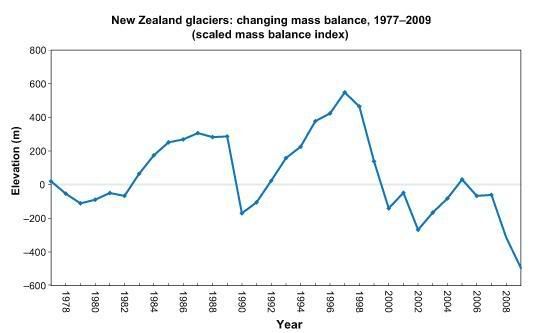Icing the Medieval Warm Period
Posted on 4 March 2011 by Daniel Bailey
"It's cold out!"
Not strange to hear that during the winter, here in the Northern Hemisphere. But strange to hear that raised as an objection in the warming world in which we live today. How much warmer it's going to get and what are the related impacts is what science is currently debating.
One of the commonly raised objections from those who would have us debate even the existence of gravity is that "It was warmer in the Medieval Warm Period." This is an innocent, but untrue, claim clearly unsupported by the available literature. Indeed, Martín-Chivelet et al reveals the 20th Century as the time with highest surface temperatures in Northern Spain in the last 4,000 years.
The Medieval Warm Period (MWP) was a period of supposedly warm climate during the early part of the past thousand years. How long it lasted, what areas were affected and even if it existed have been questioned. Some areas seem to have been affected more by changes in precipitation than in temperature.
A study has been recently published which sheds new light on this debate. Koch & Clague, in their paper Extensive glaciers in northwest North America during Medieval time, provide new evidence showing that several glaciers in western North America and elsewhere in the world advanced during Medieval time and that some of these glaciers achieved extents similar to those at the peak of the Little Ice Age, a very cold period many hundreds of years later.
What the authors' research finds is that these glacial responses could not have happened in a world with a climate similar to ours today. Indeed, recent studies (here and here) by Mauri Pelto show that glaciers without a consistent accumulation zone (where the glacier "packs on weight") will not survive. This helps explain why today's glaciers (responding to today's warming world) are retreating to their smallest areas in many thousands of years, exposing their longer histories in the form of buried datable material for scientists like Koch & Clague to decode.
What this means for the MWP is that if summers were as warm then as today, glaciers globally should have retreated significantly. Changes affecting glaciers around the world require global effects. Since that did not happen, global temperatures then could only have been warm for a part of the MWP.
So what else could explain these glacier advances in a supposedly warm world? The most likely answer is that changes in factors besides temperatures played a significant role. Koch & Clague find a linked response between:
- increased winter precipitation
- changes in solar activity
- changes in the El Niño/La Niña (a Pacific Ocean weather pattern affecting the entire globe) in response to variations in solar activity
As a result of these linked responses, Koch & Clague suggest that glaciers were able to advance during the MWP because warm regional areas were interrupted by periods of cooling, interspersed with variable patterns of precipitation. Given the length and breadth of the information we now know, Koch & Clague make a substantial case that the MWP should be more aptly named the Medieval Climate Anomaly.
Acknowledgements:
To glaciologist Mauri Pelto, for being kind enough to lend his perspectives and expertise. To the many other contributing authors at Skeptical Science for their valued efforts as well. Many thanks, all.































 Arguments
Arguments























 0
0  0
0

 The rest of your suggestion, while intriguing, would amount to repudiating a Gish Gallop, in my opinion.
The rest of your suggestion, while intriguing, would amount to repudiating a Gish Gallop, in my opinion. Annual mass balance at World Glacier Monitoring Project
Annual mass balance at World Glacier Monitoring Project
 do demonstrate current global warmth exceeding the warmth during the MWP.
Furthermore when we think of the most sensitive of indicators of climate change ice caps are undoubtedly amongst the most sensitive. Evidence from Anderson et al (2008) demonstrate that ice cap recession on baffin island is beyond any period over the last 1700 years. Although the results of this study are of a low temporal resolution, conclusions such that ice cap recession is unprecedented over at least the last 1700 years are assured.
Each individual study obviously has their pitfalls but I do find it challenging that using annually to decadally resolved proxies for reconstructions are the only way of determining the magnitude of MWP to CWP comparisons. Perhaps Moberg's wavelet method is a plausible solution?
do demonstrate current global warmth exceeding the warmth during the MWP.
Furthermore when we think of the most sensitive of indicators of climate change ice caps are undoubtedly amongst the most sensitive. Evidence from Anderson et al (2008) demonstrate that ice cap recession on baffin island is beyond any period over the last 1700 years. Although the results of this study are of a low temporal resolution, conclusions such that ice cap recession is unprecedented over at least the last 1700 years are assured.
Each individual study obviously has their pitfalls but I do find it challenging that using annually to decadally resolved proxies for reconstructions are the only way of determining the magnitude of MWP to CWP comparisons. Perhaps Moberg's wavelet method is a plausible solution?

 See NIWA
See NIWA








Comments